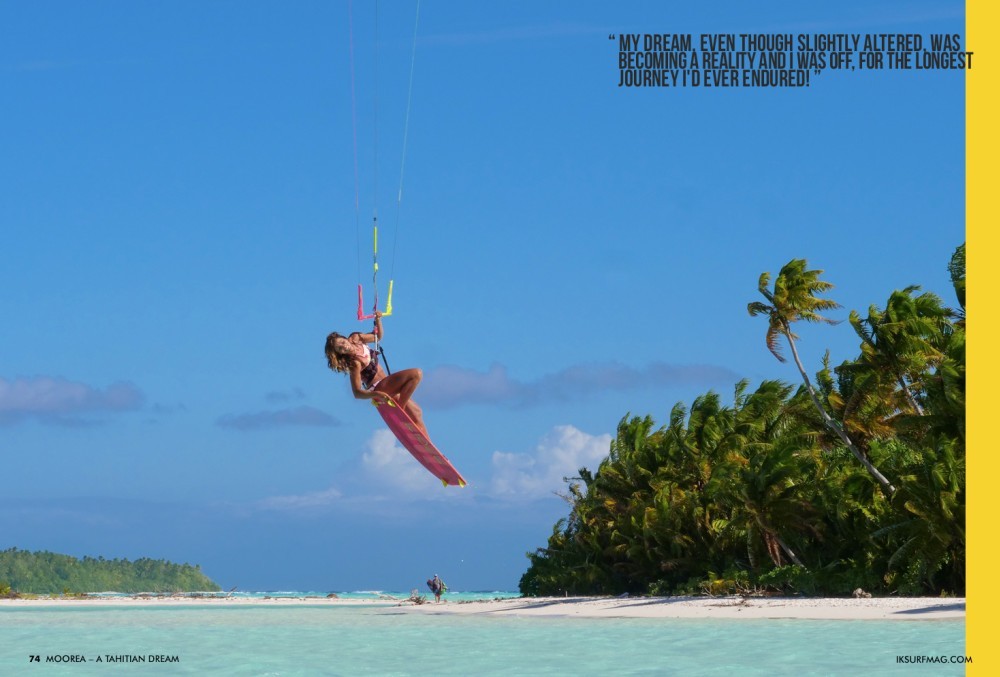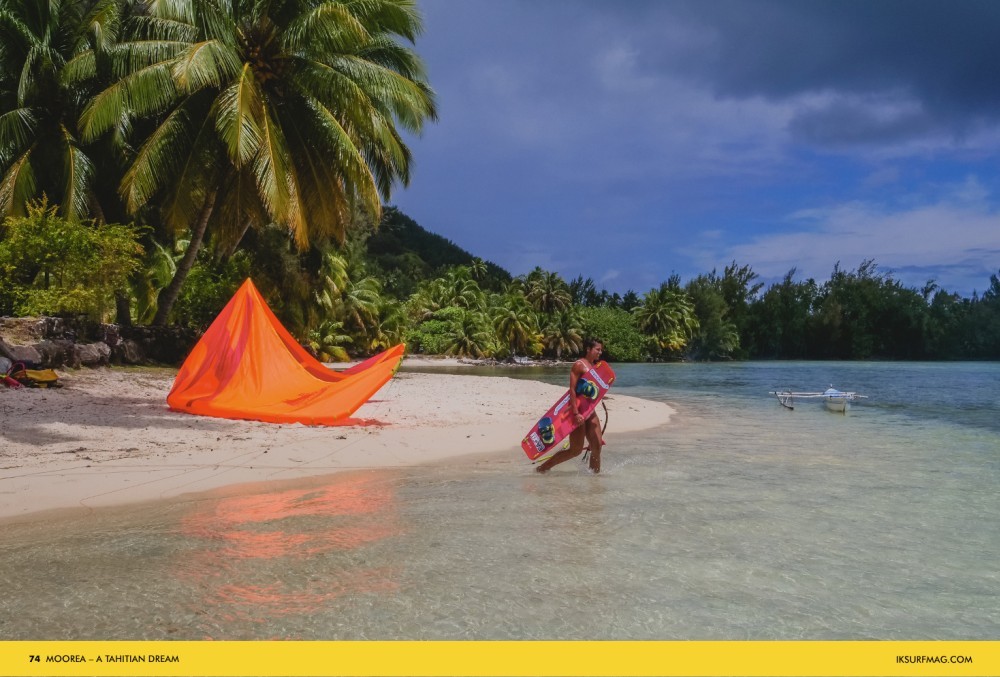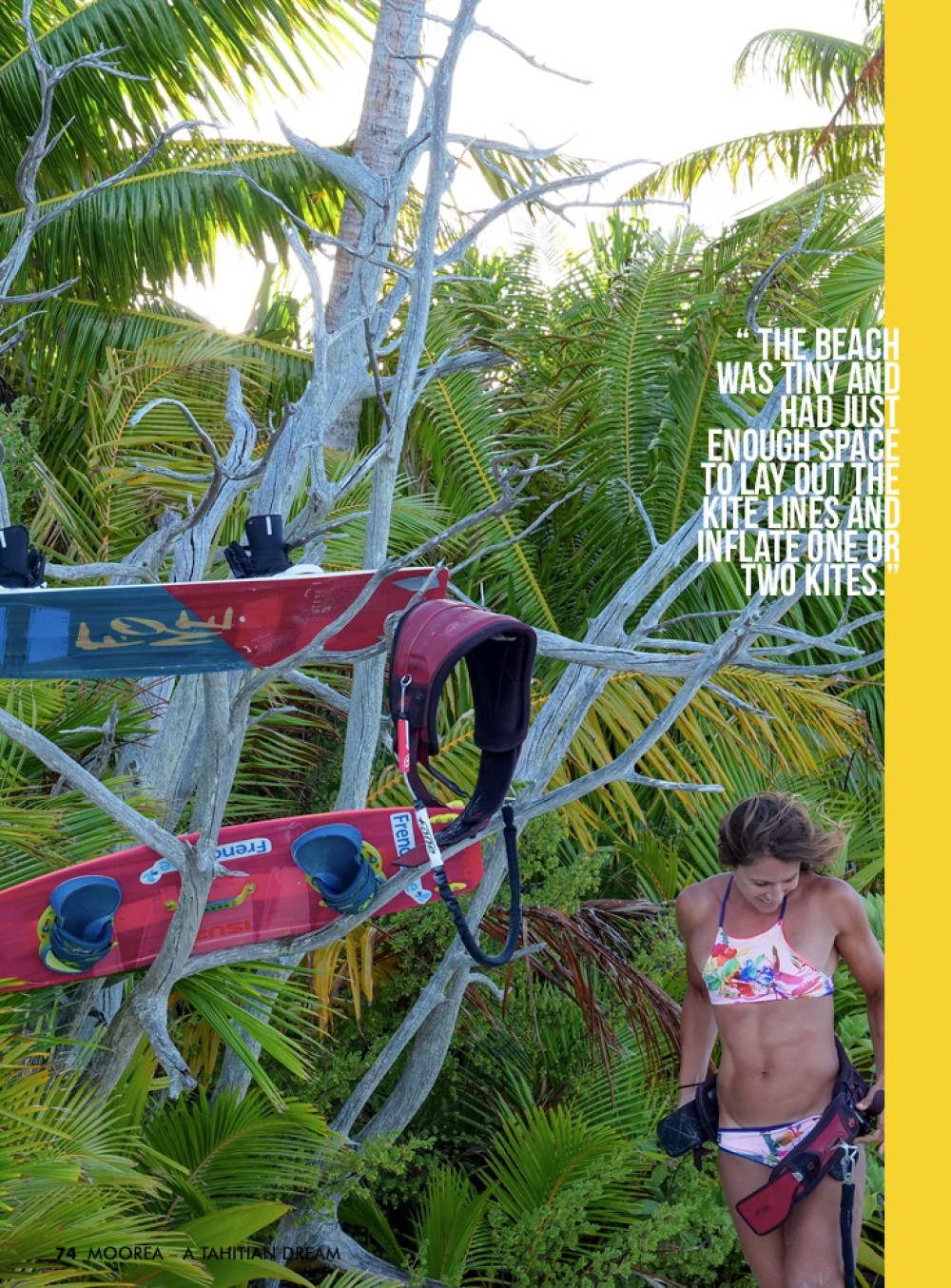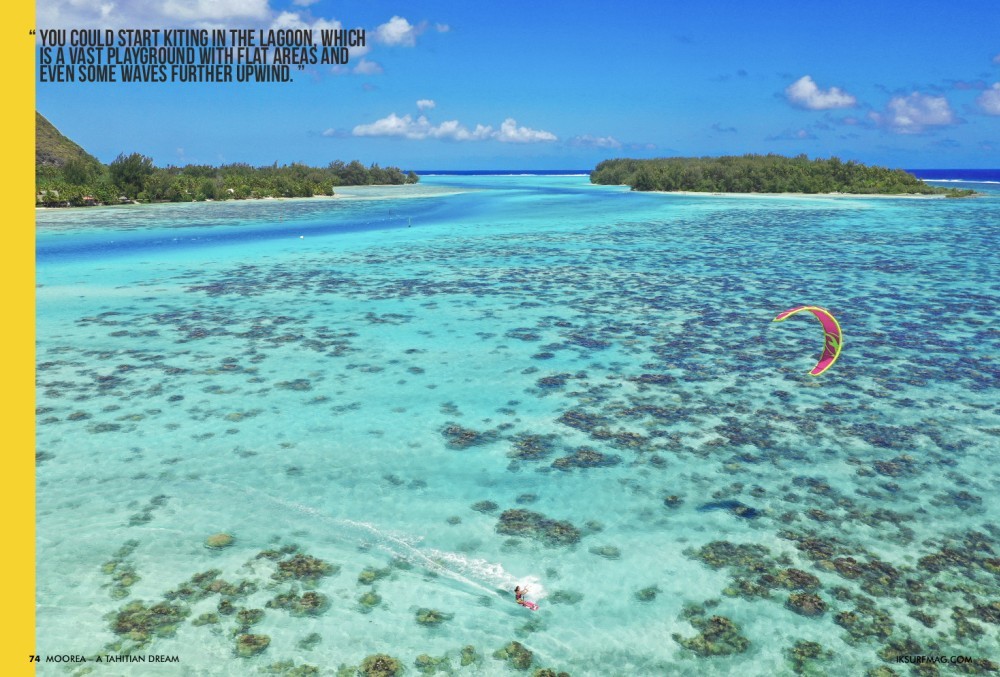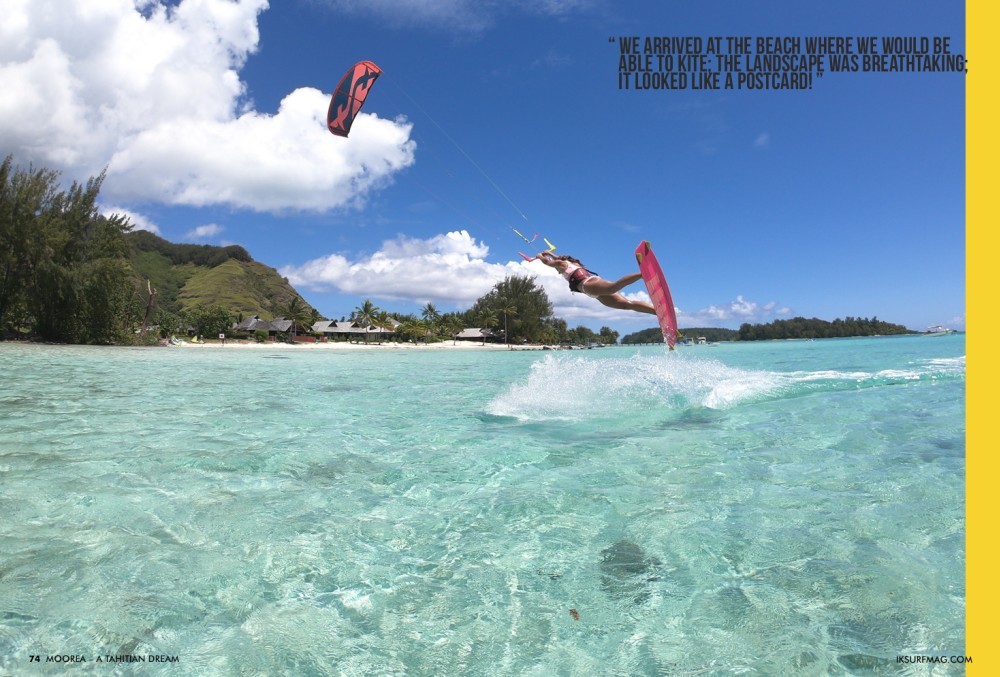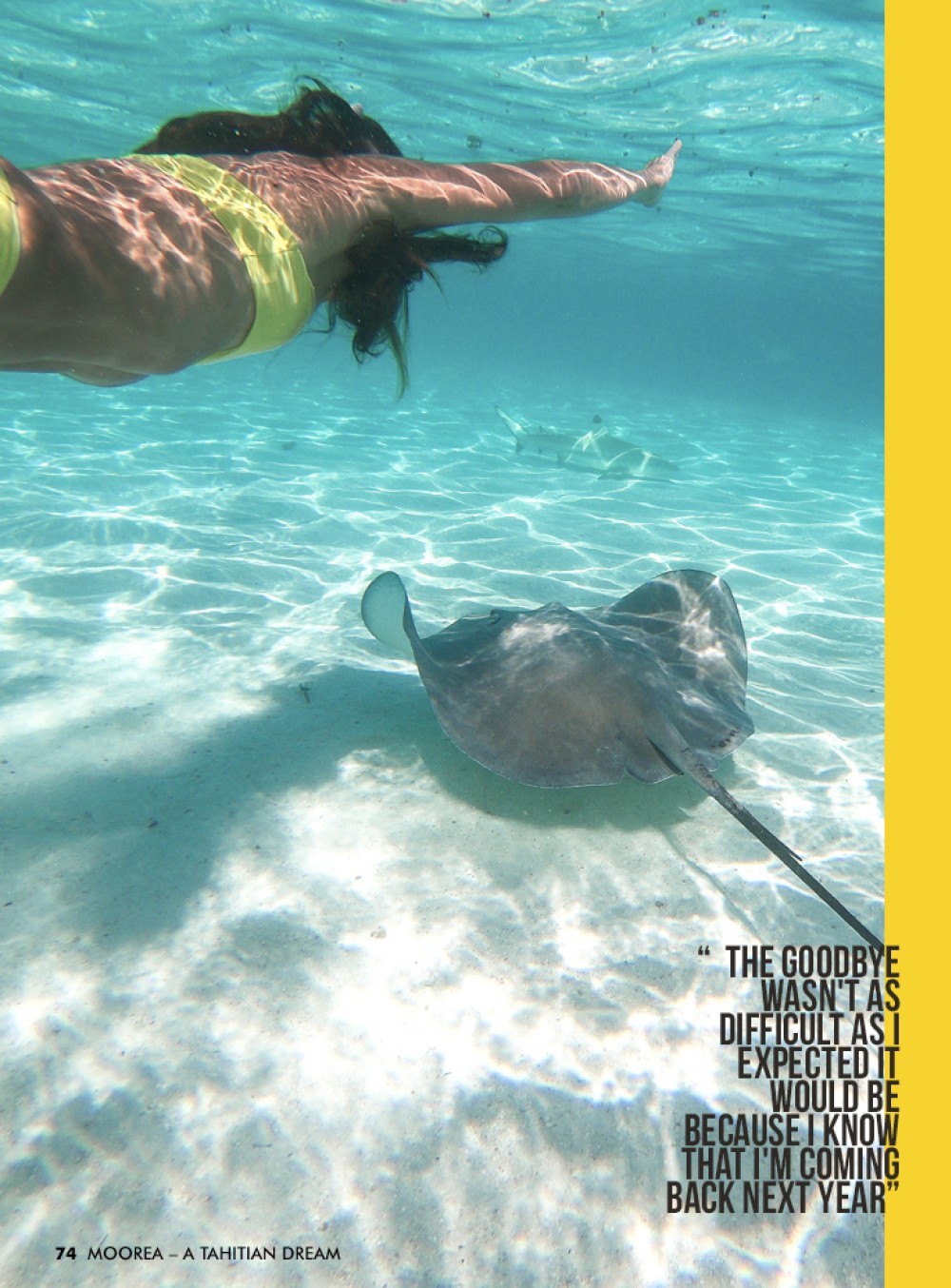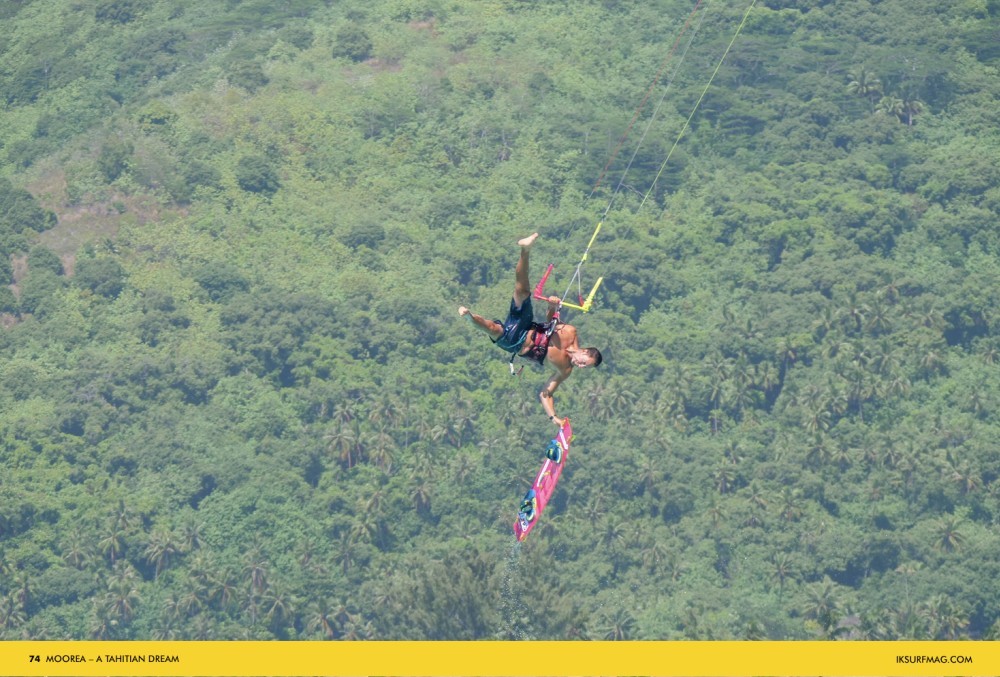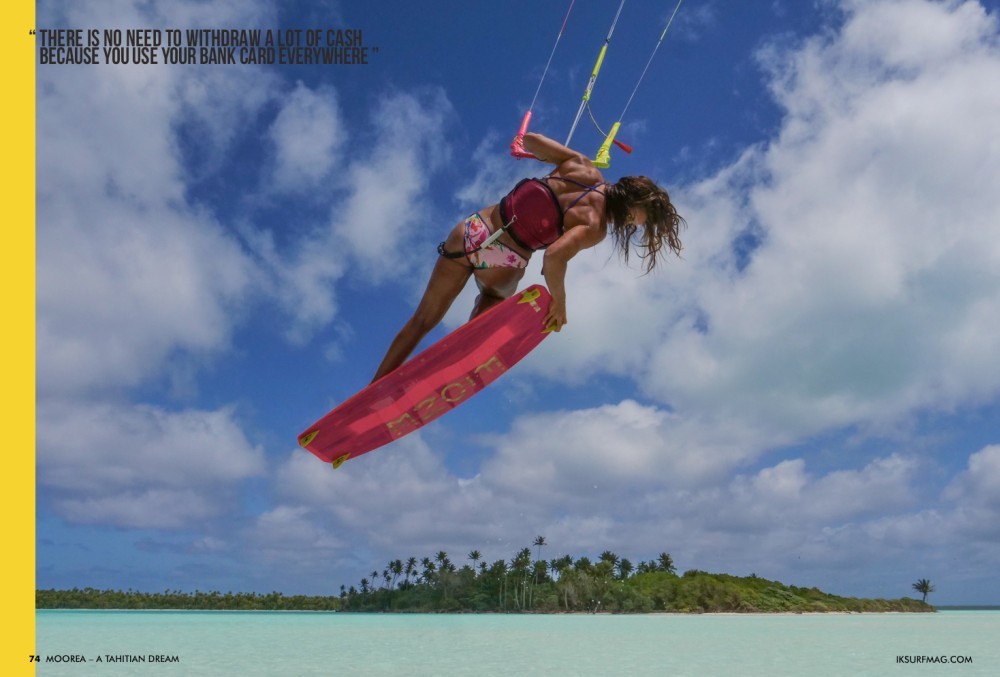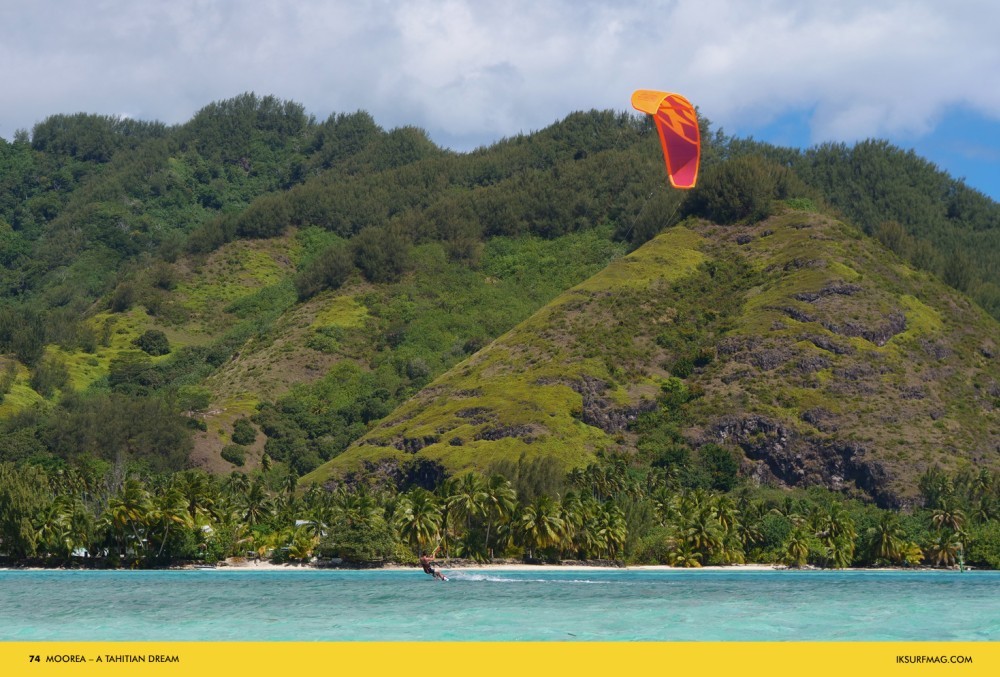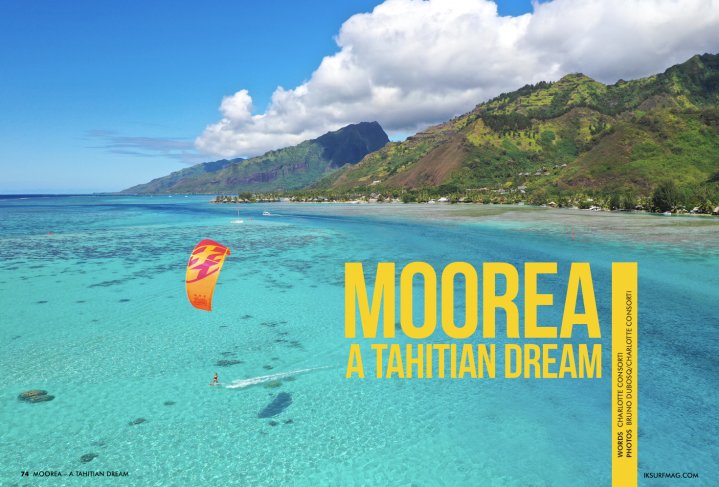
Moorea - A Tahitian Dream
Issue 74 / Mon 8th Apr, 2019
Charlotte Consorti heads to Moorea in Tahiti to see if this idyllic spot will meet up to the expectations she has been having in her dreams! Did it deliver, read this article to find out!
Many people dream of visiting Tahiti, especially ocean lovers, kitesurfers, surfers and sailors and it is easy to see why. Tahiti and its 118 islands, atolls and motus (Polynesian reef islet with vegetation), are carved and cradled by the trade winds creating an endless playground. If I could give you one piece of advice, it would be never to set foot there; you'll never want to leave!
French Polynesia is an overseas collective of the French Republic and the only overseas country of France covering an area as large as Europe. Going kitesurfing in Tahiti had been nothing but a dream of mine for a long time, and it appeared to be nearly impossible, mainly due to the costs that a trip like that would entail.
With airline tickets costing over 2000 euros, it was way over for my budget! When I heard about the new low-cost company 'French Bee' that had started flights between France and Tahiti, I immediately got my hopes up! I instantly contacted Sacha, a friend of mine who lived there, and told him I was coming.
He continually emphasised that September was the best month to visit in terms of reliable wind, less rain and frequent whales sightings. I tried to book flights and accommodation, but apparently, I wasn't the only one keen to visit Tahiti! Everything was overbooked for the next six months to a year; I was devastated. While browsing for an equally exciting destination, I came across Moorea.
Located only 40 minutes by ferry from Tahiti, Moorea is known as Tahiti's sister island. I booked a small bungalow directly on 'Les Tipaniers' that seemed to be the best spot on the island for kitesurfing, with one of the most beautiful beaches. My dream, even though slightly altered, was becoming a reality and I was off, for the longest journey I'd ever endured!
The journey from Paris to Tahiti took over 22 hours, with a short 1-hour stopover in San Francisco, which allowed us to stretch our legs for a little bit. The trip went smoothly, without any problems. I surprisingly found it less tiring than flights I would usually take with several stops. I took the time to set my mind right for this trip, and watched the fascinating cartoon 'Vaiana' that tells the story of a Tahitian princess; I couldn't wait to get there!
My boyfriend, Bruno and I arrived at Fa'a airport at night, so it was not the scenery that captivated us, but the way the locals welcomed us! If you've ever been to an airport at 4:00 AM, you'll understand what I mean when I say I expected everything to be closed, but not Tahiti airport!
We were greeted by musicians, playing their ukuleles, dancers dressed in pareos, pearl necklaces and flower crowns, with beautiful smiles on their faces, we were awe-struck. Once we got our suitcases, we went to the arrivals hall, and the smell of flower crowns was overwhelming. Their custom is to offer a wreath of flowers on arrival and a crown of shells when you leave.
We rented a car from the airport to catch the ferry to Moorea. Even though the road was reasonably straightforward, we still managed to get lost and somehow drove in the opposite direction. After all, it was 4:00 AM, and we had been travelling for almost a whole day. There was a lot of traffic, honks, and yes, even in paradise, the city is hectic. We eventually got to the harbour and caught the ferry.
As soon as we arrived at Moorea, the atmosphere changed completely, everything seemed to calm down, and a sudden sense of tranquillity came over me. The most striking thing when you arrive at Moorea is its wild and majestic appearance, worthy of a film set! It is a high volcanic island, surrounded by a lagoon and the island is well preserved from urbanisation compared to Tahiti.
This time, there would be no problems getting lost; there is only one 60 km road that goes around the island. Whether we chose left or right, it wouldn't matter, we'd reach Les Tipaniers eventually!
We had rented a small bungalow on a private estate. The setting was beautiful, with twenty bungalows in the middle of vegetation and the beach 100 metres away. The beach was tiny and had just enough space to lay out the kite lines and inflate one or two kites. It was a little sheltered from the wind, so you had to step into the lagoon to launch.
There was a channel reserved for kites to get away from the shoreline. We noticed a sign at the beach that explained all the different zones and local rules and regulations. Kitesurfing had recently been banned at the spot, and that's why zones were created. It was a family-oriented beach; it was indeed ideal because the water was shallow and there was little coral.
Once you are far enough from the beach, you could start kiting in the lagoon, which is a vast playground with flat areas and even some waves further upwind. A channel separated the spot where there was a lot of traffic, jet ski’s, boats and currents.
The wind rarely came through in the morning, and this was the perfect time to go swimming with rays and sharks. Every morning we went kayaking to see them, and it was incredible! I have to admit, I didn't feel comfortable at first, but I relaxed eventually. We spent a week on this little slice of paradise, kitesurfing and kayaking in the lagoon.
As this beach was located on the Northern side, it allowed us to watch the sunset to the right and sunrise to the left. Everything was perfect, except for the rooster that lived there! This rooster had no notion of dawn, and I'm pretty sure he was blind too, as he would start crowing at 2:00 AM, daily, and wake us all up!
We met Caro and PF, a couple of kitesurfers who had just settled on the island and they invited us to stay at their home; the mana that saved us! We moved to the other side of the island next to Temae Beach; it was a long beach of white sand lined with coconut groves and is one of three public beaches. On weekends, all the locals got together and have a massive barbecue.
The beach is not very wide, but the onshore winds meant you could launch comfortably, but keep an eye out for the palm trees just behind you! It rained often, but the wind was much stronger. We could still get in some short sessions between the heavy rainstorms.
The life and choices of Caro and PF were genuinely inspiring, and their children emitted happiness, there's nothing better than coming home from school to go fishing or body boarding. We cherished the moments we shared with them; this is why I love travelling and meeting memorable people like this!
We planned to end our trip on the island of Tetiaora, which was a few hours by boat from Tahiti. It is shaped like a ring and made of coral reefs. This reef has no safe access to the inner lagoon as it has no passes. So we anchored on the outside and had to carefully manoeuver the boat with extreme caution to cross the coral reef, timing it with a wave, perfectly.
We then walked around the island surrounded by a jungle of palm trees. On our way, our guide caught a huge coconut crab, which was very impressive. He released it back into the wilderness, of course, as they are rare and not spotted often. We finally saw a light at the end of the tunnel, the exit from the jungle!
We arrived at the beach where we would be able to kite; the landscape was breathtaking; it looked like a postcard! Home to one of the largest bird colonies in Polynesia, where white terns, brown seagulls, frigates, Straw-tailed and crested terns rubbed shoulders. Several places were forbidden to avoid disturbing them, and we had to keep an eye out not to get too close while kitesurfing.
We were lucky, and the wind blew nonstop at more than 20 knots during the two days that we were there. While the rest of the group explored on foot, we explored this paradise on our kites. Multiple spots with shallow, crystal clear, small sharks, rays and turtles went past under the board; it was a kitesurfing paradise!
On our way back, the waves were massive, and the boat was facing the wind. I decided to shelter myself in one of the cabins, but everybody else that was on deck got soaked from head to toe and extremely seasick!
We spent our last night at Sacha's place in Tahiti. The goodbye wasn't as difficult as I expected it would be because I know that I'm coming back next year to discover another new island!
Tips For Your Trip
How To Get There
Company: French Bee
Flight: Paris/San Francisco/Tahiti
Duration: 22 hours
Budget: About 1000 euros
https://www.frenchbee.com/fr/destinations/tahiti
To Get From Tahiti to Moorea
There are two ferry companies. They have similar fares and the same journey times. The Teveau ferry is smaller so gets full more often.
Budget: 1500 XPF/per person one-way plus 4330 XPF per car each way
Duration: 30/40 minutes
It is advisable to book if you take the ferry by car during high season (weekends and school holidays)
When To Go
Moorea has a tropical and warm climate with two seasons:
The southern winter from April to October with less rain and ideal temperature, and the summer from November to March which is very wet, humid with heavy rains. The best period for the wind is between June and September. Make sure you take all kites because the wind fluctuates frequently.
Where To Stay
Bungalow rentals in Les Tipaniers
http://domlocpolynesie.com, locationbungalow@yahoo.fr
Budget: 9000 XPF for a small bungalow per night, or 75 euros
If you prefer staying at a hotel, you have the Hotel des Tipaniers 100 m away that also has restaurants and bars.
Where To Eat
My favourite was the Mahana snack, mainly for the setting overlooking the lagoon and the value for money. Their raw fish with coconut milk is a delight! I advise you to arrive early (before noon) or to book in advance as it was often full.
Currency
The currency used in Tahiti and its islands is the Change Franc Pacifique CFP or international abbreviation: XPF. It has a fixed exchange rate with the euro (100 XPF = 0.838 euros)
There is no need to withdraw a lot of cash because you use your bank card everywhere.
Time Zone Differences
Polynesia is at 10 am GMT, a time difference of -12 hours in the summer and -11 hours in the winter. It is therefore quite simple to calculate the difference; when it is midnight in France, it is midday in Tahiti.
Electricity
Electricity is 220 volts and 60 Hertz. The sockets are identical to those found in France.
Language
The official language of French Polynesia is French. The entire population understands it, is the first language taught in schools. However, on some more remote islands, the inhabitants may have minimal practice. Tahitian is the majority language of the Society Islands and is officially recognised as a regional language.
The Basics:
Hello: Ia ora na, Goodbye: Nana and Thank you: Mauruuru
Car Hire
I strongly advise you to rent a car. No need for a 4X4, a small car is sufficient to access the different kitesurfing spots, and all international driving licenses are recognised there.
Phone and Internet
I recommend you to buy a local sim card when you arrive. There are two operators - Vini, the leading operator and more recently Vodafone. I was advised to use Vini because it gets a better signal everywhere. I bought a card at 6000 XPF or 50 euros, which gave 2 GB of data and 30 minutes of calls. You can find prepaid cards everywhere, and all you need an ID, and there is no contract so no need to give your bank details.
Formalities and Visas
An overseas department of the French Republic, French Polynesia is part of France, but not of the Schengen Area. For French citizens, as for other European Union nationals, an identity card is not enough; you must have a passport, which allows a stay less than three months.
To enter French Polynesia, you will need to transit in a country that requires a passport. Some travellers to Polynesia will also pass through an airport in the United States. To do this, EU citizens must have an ePassport and apply for an ESTA travel authorisation in advance. This request must be made at least 72 hours before the departure date. Non-French EU citizens and nationals of the Swiss Confederation must apply for a visa for a stay longer than three months. Canadian citizens can stay one month without a visa. For other foreign nationals, access to French Polynesia is only possible through a Schengen visa, bearing the special mention (valid for French Polynesia) to be expressly requested from an embassy of France or a prefecture in the French territory.
Videos
By Charlotte Consorti




